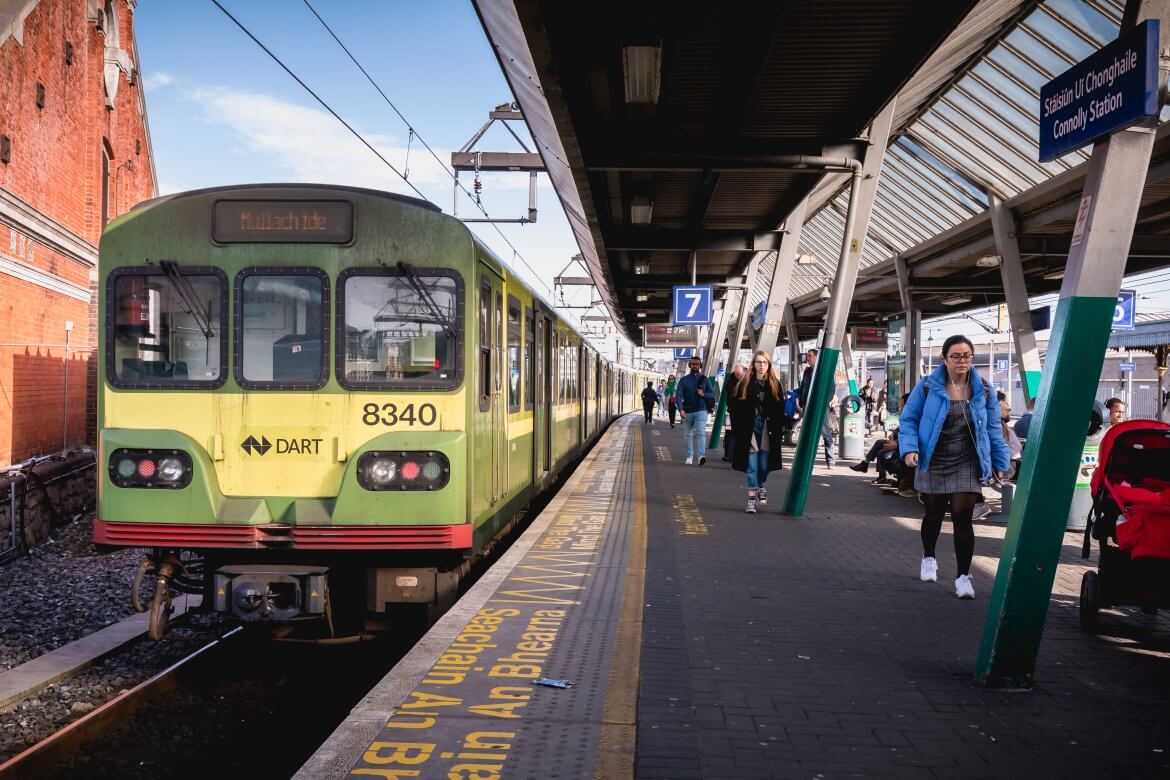Ireland’s charming villages, bustling cities, and dramatic landscapes beckon travelers from around the world. While many visitors default to renting a car, Ireland’s public transport system offers an authentic way to explore the Emerald Isle. Let me walk you through the various options for navigating Ireland without getting behind the wheel.
The backbone of Ireland’s transport network is its rail system, Irish Rail (or Iarnród Éireann). Radiating from Dublin’s two main stations – Heuston and Connolly – comfortable trains connect most major cities and towns. The Dublin-Cork line is particularly scenic, whisking passengers through the rolling countryside in about two and a half hours. For the best deals, book your tickets online in advance – you can often save up to 50% compared to buying at the station.
Dublin itself boasts an integrated transport network that makes exploring the capital a breeze. The Luas, Dublin’s modern tram system, consists of two lines that cross the city. The Red Line runs east to west, while the Green Line connects the south side to the city center. Both lines offer frequent service and are popular with both locals and tourists. They’re particularly useful for reaching attractions like the Guinness Storehouse or shopping areas like Dundrum Town Centre.
The DART (Dublin Area Rapid Transit) is another gem in Dublin’s transport crown. This coastal rail service hugs Dublin Bay, offering spectacular sea views as it connects charming seaside villages like Howth and Malahide in the north to Bray and Greystones in the south. It’s perfect for day trips from the city, and the journey itself becomes part of the adventure.
For longer journeys across Ireland, Bus Éireann provides an extensive network of intercity and regional services. While trains might be faster between major cities, buses often offer the only public transport option to smaller towns and rural areas. They’re particularly useful for reaching popular tourist destinations like the Cliffs of Moher or the Ring of Kerry. Private coach companies like Aircoach, GoBus, and CityLink also operate on major routes, often offering competitive prices and comfortable coaches with WiFi.
One of the handiest innovations in Irish public transport is the Leap Card. Think of it as Ireland’s equivalent to London’s Oyster Card – a prepaid card that works across multiple transport types in Dublin and other major cities. For tourists staying more than a few days, it’s worth picking one up at the airport or main stations. You’ll save money on fares and avoid the hassle of carrying exact change.
Getting to and from Ireland’s airports is straightforward. Dublin Airport is well-connected to the city center by various bus services, including Aircoach and Dublin Bus. In other cities, dedicated airport services operate regularly – Shannon Airport has connections to Limerick and Galway, while Cork Airport links to Cork city center.
For those venturing into rural Ireland, some advance planning is essential. The Local Link service provides buses in rural areas, though services may be less frequent and sometimes need to be booked in advance. Many tourists combine public transport with organized tours to reach more remote attractions. For instance, you might take a train to Galway and then join a day tour to Connemara or the Aran Islands.
When planning your Irish adventure, remember that weather can impact transport services, particularly in winter. It’s wise to build some flexibility into your schedule and always check service times for the last return journey – especially in rural areas where services may be limited in the evenings.
What makes Irish public transport special isn’t just getting from A to B – it’s the opportunity to meet locals, hear stories, and experience the famous Irish hospitality. Bus and train journeys often become impromptu social occasions, with friendly conversations striking up between strangers. Don’t be surprised if you arrive at your destination having made new friends and gathered insider tips about where to visit next.
For budget-conscious travelers, Ireland’s public transport can offer significant savings compared to car rental, especially when you factor in fuel costs and parking fees in cities. The key is to book ahead where possible, consider travel passes for longer stays, and take advantage of off-peak fares.
Whether you’re planning to explore Dublin’s historic streets, venture to the wild Atlantic coast, or discover everything in between, Ireland’s public transport system can get you there. It might require a bit more planning than driving, but the money saved and experiences gained make it a rewarding way to discover the real Ireland.
Remember, as the Irish say, “The journey is just as important as the destination.” Taking public transport in Ireland proves this old adage true, offering not just transportation but a window into Irish life and culture.


